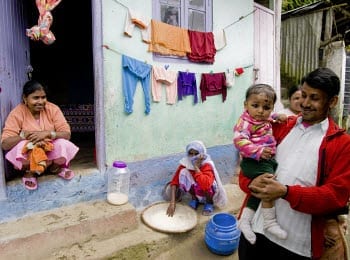When it comes to the world of micro insurance…
Asia has been enjoying a 40% annual growth in recent years. Despite the red-hot performance, though, the overall coverage of the populations of Asia and Oceania doesn’t even reach five percent.
The Asian market for micro insurance is only getting started. The potential is limitless.
What Is Micro Insurance, Anyway?
Micro insurance covers low-income households, most often ones found in developing nations. As a rule, the target demographic are the poor, and in most cases people who have been overlooked by traditional insurance carriers. The insurance seeks to address the issue of poor families who are unable to afford regular policies, and offers them policies tailored to their specific needs and conditions. The plan is designed for people whose assets and savings are minimal, and also provides compensation for injuries, illnesses, and death. This way, even poor families can have some form of coverage. The people covered by micro insurance policies do in fact make premium payments, but the cost is proportionate with how likely and costly the risk.
The Burgeoning Asia Market
Recent research conducted in November 2013 shows that micro insurance has covered over 170 million people and properties. The forty percent growth encompasses a two-year period from 2010 to 2012. India is at the front of the pack with over 100 million policies, and Indonesia and Malaysia stand out as the having the strongest growth rate, at over 100 percent and 185 percent respectively.
When it comes to which type of coverage is the most popular, life insurance is the clear winner. This is followed by accident, health, agriculture and at the bottom of the heap, property. In addition to micro insurance, there’s approximately another 1.6 billion covered by what’s known as “social micro insurance” or “social protection schemes”, which are subsidized schemes.
A Little Help From The Government
Asian governments subsidize many social micro insurance schemes, particularly in the areas of health and agriculture. Community-based schemes receive government support in an effort to address the issues of risks incurred by lower income people and social inequality. Subsidized social protection schemes help to break the cycle of poverty and ultimately make for a more secure populace, enjoying some financial protection from catastrophes and accidents. After all, if there is any segment of the world’s population that has the toughest time recovering from disasters, it’s the poor.
The Chinese government launched its own micro insurance pilot projects in 2008. Currently, 25 million people enjoy coverage, which is of course just a fraction of the overall population. Still, it’s at least a start.
The Future Looks Bright
The sheer size of Asia’s uninsured population clearly demonstrates the potential market. Private insurance companies are poised to present coverage to an increasing number of low-income households, though China and India still have a very strong government involvement via the subsidized social protection schemes. Is it any wonder that Indonesia and Malaysia have demonstrated the strongest growth rate?
But at the end of the day, whether it’s a micro insurance policy offered solely via an insurance company, or a policy supplemented by a government-funded scheme, it looks as if lower income families are finally getting some protection enjoyed by their comparatively wealthier counterparts in the more developed, industrialized nations.
Byline: John Terra has been a freelance writer since 1985. He writes about everything from running 5K’s to auto insurance companies.
